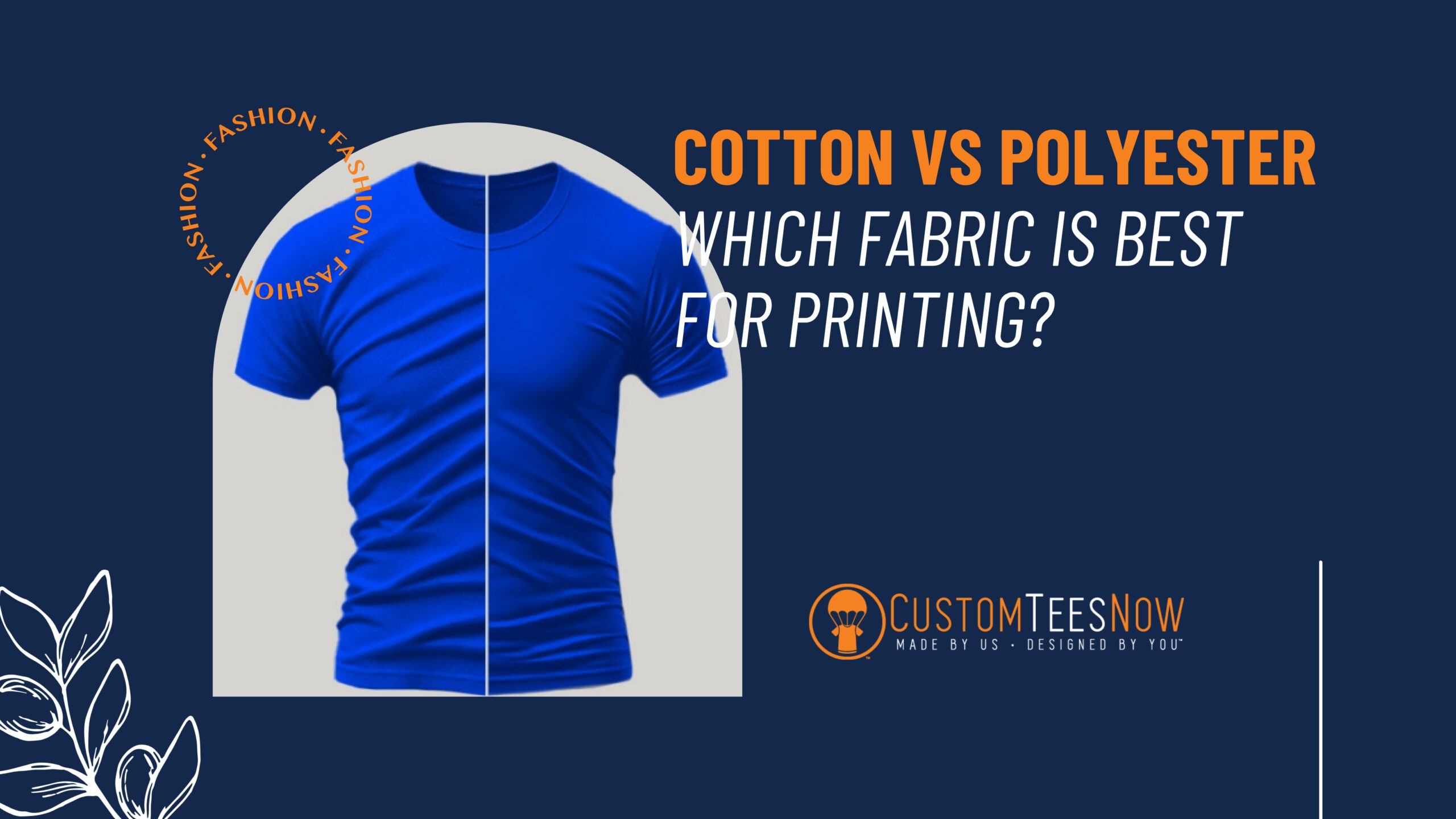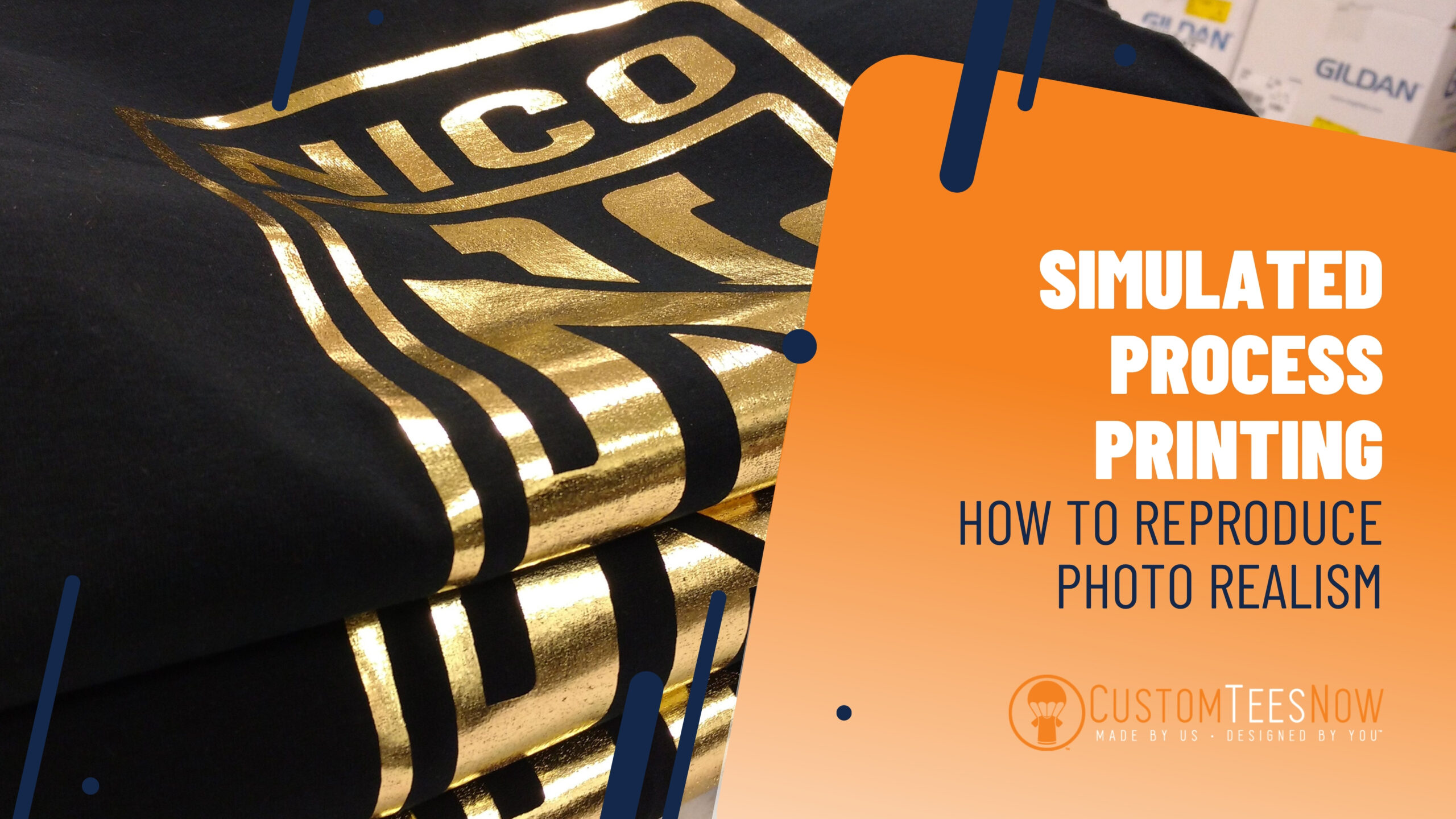
- July 1, 2025
The Ultimate Guide to T-Shirt Fabrics: Choosing the Right Material

T-shirts are a wardrobe staple, valued for their versatility, comfort, and ability to express personal or brand identity. However, not all T-shirts are created equal—the fabric you choose significantly impacts the shirt’s feel, durability, and suitability for different occasions. With a wide range of materials available, from natural fibres like cotton and linen to synthetic options like polyester and innovative blends, selecting the right fabric can be daunting. This comprehensive guide examines the most common T-shirt fabrics, their properties, advantages, disadvantages, and optimal use cases, enabling you to make an informed decision. Whether you’re a business owner designing custom apparel, a consumer seeking the perfect T-shirt, or simply curious about fabric options, this guide will equip you with the knowledge to make informed choices.
Why Fabric Choice Matters
The fabric of a T-shirt determines how it feels against your skin, how it holds up over time, and how well it suits specific activities or climates. A poorly chosen fabric can lead to discomfort, quick wear, or an unflattering appearance, while the correct choice enhances both functionality and style. Key factors to consider include:
- Comfort: How soft and pleasant the fabric feels against the skin.
- Breathability: The ability of the fabric to allow air circulation, keeping you cool.
- Durability: The fabric’s ability to withstand washing, stretching, and daily wear.
- Moisture-Wicking: The fabric’s ability to effectively manage sweat is crucial for activewear.
- Cost: Balancing quality with affordability for your budget.
- Sustainability: The environmental impact of the fabric’s production and lifecycle.
By understanding these factors, you can select a T-shirt fabric that aligns with your needs, whether for casual wear, athletic performance, or eco-conscious choices.
Common T-Shirt Fabrics
Below, we explore the most popular T-shirt fabrics, detailing their characteristics, pros, cons, and ideal applications. Each fabric offers unique benefits, making it suitable for specific purposes.
1. Cotton
Cotton is the most widely used fabric for T-shirts, prized for its natural softness, breathability, and versatility. Derived from the fibres surrounding the seeds of the cotton plant, it’s spun into yarn and woven or knitted into fabric. Cotton’s natural properties make it a go-to choice for everyday wear and custom printing.
Types of Cotton
- Standard Cotton: Often made from carded open-end fibres, this is the most affordable type. It’s durable but may feel slightly rough compared to premium variants.
- Ring-Spun Cotton: Fibres are twisted and thinned during the spinning process, creating a smoother, softer, and more resilient fabric.
- Combed Cotton: Fibres are combed to remove impurities and short strands, resulting in a soft, durable material.
- Organic Cotton: Grown without synthetic pesticides or fertilizers, organic cotton is eco-friendly, hypoallergenic, and often softer than conventional cotton.
- Pima Cotton: Known for its exceptionally long staple fibres, Pima cotton is exceptionally soft, durable, and resistant to pilling. Supima is a trademarked version of American-grown Pima cotton, ensuring high quality.
- Slub Cotton: Features intentional irregularities in the yarn, creating a textured, vintage look with a unique aesthetic.
Pros
- Soft and Comfortable: Gentle on the skin, ideal for sensitive skin types.
- Breathable: Allows air circulation, keeping you cool in warm weather.
- Absorbent: Effectively manages sweat, making it suitable for daily wear.
- Biodegradable: Environmentally friendly as it decomposes naturally.
- Versatile for Printing: Works well with screen printing, DTG, and DTF methods.
Cons
- Shrinkage: This item may shrink if washed in hot water, especially if it is not pre-shrunk.
- Wrinkling: Prone to creasing, requiring ironing for a polished look.
- Fading: Colours may fade over time, especially with frequent washing.
- Cost: Premium variants, such as Pima or organic cotton, are more expensive.
Best Uses
Cotton is ideal for casual T-shirts, promotional apparel, and everyday wear. Organic cotton is an excellent choice for eco-conscious consumers, while Pima or combed cotton is suitable for premium, high-quality T-shirts.
2. Polyester
Polyester is a synthetic fabric made from petroleum-based polymers introduced in the 1940s. Due to its durability and moisture-wicking properties, it’s widely used in T-shirts, particularly for athletic and performance wear.
Types of Polyester
- Standard Polyester: Affordable and commonly used in budget-friendly athletic T-shirts.
- Microfiber Polyester: Made with finer fibres, offering a softer, more natural feel.
- Recycled Polyester: Produced from recycled plastic bottles, this eco-friendly option retains the durability of polyester.
Pros
- Durable: Resists stretching, shrinking, and wear, ensuring long-lasting T-shirts.
- Moisture-Wicking: Quickly pulls sweat away from the skin, ideal for sports.
- Wrinkle-Resistant: Maintains a neat appearance with minimal care.
- Quick-Drying: Dries faster than cotton, perfect for active use.
- Cost-Effective: Generally cheaper than natural fibres.
Cons
- Less Breathable: Traps heat, which can cause discomfort in hot weather.
- OdourOdour Retention: May retain odours, requiring frequent washing.
- Environmental Impact: Non-biodegradable and production involves chemical processes.
- Texture: Can feel less soft or slightly coarse compared to cotton.
Best Uses
Polyester is perfect for athletic T-shirts, outdoor gear, and sublimation printing due to its compatibility with vibrant, all-over designs. Recycled polyester is a sustainable choice for environmentally conscious brands.
3. Blends
Blended fabrics combine two or more fibres to leverage their strengths, offering a balance of comfort, durability, and functionality. The most common T-shirt blends include cotton-polyester and tri-blends.
Common Blends
- Cotton-Polyester: Combines the softness of cotton with the durability of polyester. Common ratios include:
- 50/50: Equal parts cotton and polyester, striking a balance between comfort and durability.
- 60/40: 60% cotton and 40% polyester, offering a balance of softness and durability.
- 80/20: Higher cotton content for enhanced comfort.
- Tri-Blends: Typically consist of cotton, polyester, and rayon. Rayon, a semi-synthetic fibre derived from cellulose, lends a silky, soft texture and a vintage aesthetic.
- Cotton-Spandex: This blend includes a small percentage (5-10%) of spandex for added stretch, making it ideal for fitted or activewear T-shirts.
Pros
- Balanced Properties: Combines comfort, durability, and functionality.
- Shrink-Resistant: Less prone to shrinking compared to pure cotton.
- Cost-Effective: Often more affordable than premium natural fibres.
- Versatile: Suitable for a wide range of uses, from casual to athletic wear.
- Soft Texture: Tri-blends, in particular, are known for their softness.
Cons
- Varying Quality: This depends on the blend ratio and the quality of the fibre.
- Breathability: It may not be as breathable as pure cotton.
- Care Complexity: Requires specific washing instructions based on the blend.
Best Uses
Blends are versatile for casual T-shirts, team uniforms, and activewear. Tri-blends are popular for their soft, vintage feel, while cotton-polyester blends are great for budget-friendly, durable apparel.
4. Linen
Linen is a natural fabric made from flax plant fibers. It’s known for its breathability and lightweight feel. Linen is less common for T-shirts but valued for its relaxed, summery aesthetic.
Pros
- Highly Breathable: Excellent air circulation, ideal for hot climates.
- Moisture-Wicking: Absorbs and releases moisture quickly.
- Durable: Strong fibres resist wear and tear.
- Softens Over Time: Becomes softer with each wash, enhancing comfort.
Cons
- Wrinkles Easily: Requires ironing for a neat appearance.
- Expensive: Higher cost compared to cotton or polyester.
- Initial Texture: May feel coarse until softened through washing.
- OdourOdour Retention: Can retain odours if not correctly cared for.
Best Uses
Linen T-shirts are perfect for warm-weather casual wear, beach outings, or relaxed summer events. They offer a stylish, laid-back look.
5. Other Fabrics
Several less standard but noteworthy fabrics are used in T-shirts, often for their unique properties or eco-friendliness.
Bamboo
- Description: Made from bamboo pulp, this fabric is soft, breathable, and eco-friendly. It has natural antibacterial properties.
- Pros: Soft, breathable, sustainable, odour-resistant odour-resistant, and suitable for sensitive skin.
- Cons: More expensive, more complex to dye, may shrink if not correctly cared for.
- Best Uses: Eco-conscious casual T-shirts and activewear.
Modal
- Description: A semi-synthetic fibre made from beech tree pulp, modal is a type of rayon known for its softness and drape.
- Pros: Ultra-soft, shrink-resistant, durable, smooth texture.
- Cons: Can shrink if washed improperly, may not hold colours well.
- Best Uses: Premium T-shirts for comfort-focused wearers.
Rayon
- Description: A semi-synthetic fibre made from cellulose, rayon is lightweight and breathable but less durable than other options.
- Pros: Soft, lightweight, elegant drape, affordable.
- Cons: Prone to wrinkling, less durable, requires careful washing.
- Best Uses: Casual T-shirts with a silky feel.
Hemp
-
- Description: Made from the hemp plant, this fabric is durable, breathable, and environmentally friendly.
- Pros: Sustainable, durable, temperature-regulating, softens with wear.
- Cons: Expensive, limited colour options due to dyeing challenges.
- Best Uses: Eco-friendly T-shirts for casual or outdoor use.
Comparison Table
The following table summarizes the key properties of each T-shirt fabric to help you compare them at a glance:
|
Fabric |
Softness |
Breathability |
Durability |
Moisture-Wicking |
Cost |
Eco-Friendliness |
Best For |
|---|---|---|---|---|---|---|---|
|
Cotton |
High |
High |
Medium |
Medium |
Medium |
High (Organic) |
Everyday wear, printing |
|
Polyester |
Medium |
Low |
High |
High |
Low |
Low (Recycled High) |
Athletic wear, sublimation |
|
Cotton-Poly Blend |
Medium |
Medium |
High |
Medium |
Low-Medium |
Medium |
Versatile, uniforms |
|
Tri-Blend |
High |
Medium |
Medium |
Medium |
Medium |
Medium |
Soft, vintage-style T-shirts |
|
Linen |
Medium |
High |
High |
High |
High |
High |
Summer wear, casual |
|
Bamboo |
High |
High |
Medium |
High |
High |
High |
Eco-conscious, sensitive skin |
|
Modal |
High |
Medium |
Medium |
Medium |
Medium |
Medium |
Premium, soft T-shirts |
|
Rayon |
High |
Medium |
Low |
Low |
Low-Medium |
Medium |
Casual, lightweight wear |
|
Hemp |
Medium |
High |
High |
High |
High |
High |
Sustainable, outdoor wear |
Choosing the Right Fabric
Selecting the ideal T-shirt fabric depends on your specific needs, preferences, and the context in which you will wear the T-shirt. Below are key considerations to guide your decision:
By Purpose
- Casual Wear: Cotton, cotton-polyester blends, or tri-blends are excellent for everyday comfort and style. Organic cotton or modal offers a premium feel.
- Athletic Wear: Polyester or blends with spandex are ideal for their moisture-wicking and stretch properties. Bamboo is also a good choice for activewear due to its breathability.
- Promotional T-Shirts: Cotton or cotton-polyester blends are cost-effective and work well with most printing methods.
- Formal or Semi-Formal: Linen or high-quality cotton,-such as Pima, can elevate a T-shirt for smarter occasions.
By Climate
- Hot Weather: Opt for breathable fabrics like cotton, linen, or bamboo to stay calm and comfortable.
- Cold Weather: Polyester or cotton-polyester blends retain heat more effectively, making them ideal for layering.
- Humid Conditions: Moisture-wicking fabrics, such as polyester or hemp, prevent discomfort caused by sweat.
By Personal Preferences
- Softness: Modal, tri-blends, or Pima cotton are ideal for those prioritizing a soft, luxurious feel.
- Stretch: Blends with spandex offer flexibility for fitted or activewear T-shirts.
- Durability: Polyester or high-quality cotton,-such as Pima, ensures long-lasting wear.
By Sustainability
- Eco-Friendly Choices: Organic cotton, bamboo, hemp, and recycled polyester minimize environmental impact.
- Hypoallergenic Needs: Organic cotton and bamboo are gentle on sensitive skin, helping to reduce irritation.
By Budget
- Affordable: Standard cotton, polyester, and cotton-polyester blends are cost-effective.
- Premium: Pima cotton, linen, bamboo, or modal are more expensive but offer superior quality.
Example Scenarios
- Startup Branding: A small business creating promotional T-shirts might choose a 50/50 cotton-polyester blend for its affordability, durability, and good print quality.
- Summer Festival: For a hot outdoor event, linen or bamboo T-shirts keep wearers cool and stylish.
- Gym Workouts: Polyester or a cotton-spandex blend provides the moisture-wicking and stretch needed for intense physical activity.
- Eco-Conscious Brand: Organic cotton or hemp T-shirts align with sustainable values and appeal to environmentally aware customers.
Fabric Care Tips
Proper care extends the life of your T-shirts and maintains their appearance. Below are general and fabric-specific care guidelines:
General Tips
- Read Labels: Always check the care label for specific instructions.
- Separate Colours: Wash dark and light colours separately to prevent colour bleeding.
- Avoid Overloading: Don “
t overcrowd the washing machine to ensure thorough cleaning.
- Use Mild Detergent: Harsh detergents can damage fibres over time.
Fabric-Specific Tips
- Cotton:
- Wash in cold water to minimize shrinkage.
- Tumble dry on a low setting or hang to dry to prevent wrinkles.
- Iron on medium heat if needed, avoiding high heat for organic cotton.
- Polyester:
- Wash in warm water to remove odours and stains.
- Tumble dry on a low setting to maintain shape and minimise static.
- Use fabric softener to reduce static cling.
- Blends:
- Follow care instructions based on the dominant fibre (e.g., cotton for 60/40 blends).
- Wash in cold to warm water and tumble dry on low for best results.
- Linen:
- Hand wash or use a gentle machine cycle with cold water.
- Hang to dry or tumble dry on low to prevent shrinkage.
- Iron while damp for a crisp look.
- Bamboo:
- Wash in cold water on a gentle cycle to preserve fibres.
- Hang to dry or tumble dry on low to avoid heat damage.
- Avoid using bleach, as it can weaken the fabric.
- Modal:
- Wash in cold water on a gentle cycle to prevent shrinking.
- Air dry or tumble dry on low to maintain softness.
- Avoid high-heat, high-heat ironing to protect the fibres.
- Rayon:
- Hand wash or use a gentle cycle to prevent stretching.
- Air dry to maintain shape and avoid wrinkling.
- Iron on low heat if necessary.
- Hemp:
- Wash in cold water to preserve durability.
- Hang to dry to prevent shrinkage.
- It softens with each wash, so avoid harsh detergents.
Fabric Weight and GSM
Fabric weight, measured in grams per square meter (GSM), affects a T-shirt’s feel and durability. Standard GSM ranges for T-shirts include:
- Lightweight (120-160 GSM): Thin and breathable, ideal for summer or layering.
- Medium Weight (160-200 GSM): Versatile for most seasons, balancing comfort and durability.
- Heavyweight (200+ GSM): Thicker and more durable, suitable for cooler weather or rugged use.
For example, a 160-180 GSM cotton T-shirt is ideal for everyday wear, while a 200+ GSM polyester T-shirt is better suited for athletic or outdoor activities. Check the GSM when selecting a fabric to ensure it matches your needs.
Fabric Finishes and Treatments
Some T-shirts undergo treatments to enhance their properties:
- Pre-Shrunk: Cotton T-shirts are compacted to reduce shrinkage during washing.
- Moisture-Wicking Finishes: Applied to polyester or blends to improve sweat management.
- Anti-Odor Treatments: Common in bamboo or athletic fabrics to reduce odour retention.
- Softening Treatments: Applied to cotton or blends to enhance softness, particularly for premium T-shirts.
These treatments can add to the cost but improve performance, so consider them based on your priorities.
Conclusion
Choosing the right T-shirt fabric involves striking a balance between comfort, durability, cost, and purpose. Cotton offers timeless softness and breathability, while polyester excels in durability and moisture-wicking properties, and blends provide a versatile middle ground. Linen, bamboo, modal, rayon, and hemp cater to specific needs, such as summer wear or sustainability. By considering factors like climate, activity, and personal preferences, you can select a fabric that enhances your T-shirt experience. Proper care ensures your T-shirts remain in top condition, making them a lasting addition to your wardrobe or business offerings. Explore these options with Custom Tees Now’s design lab to create T-shirts that perfectly suit your needs.



